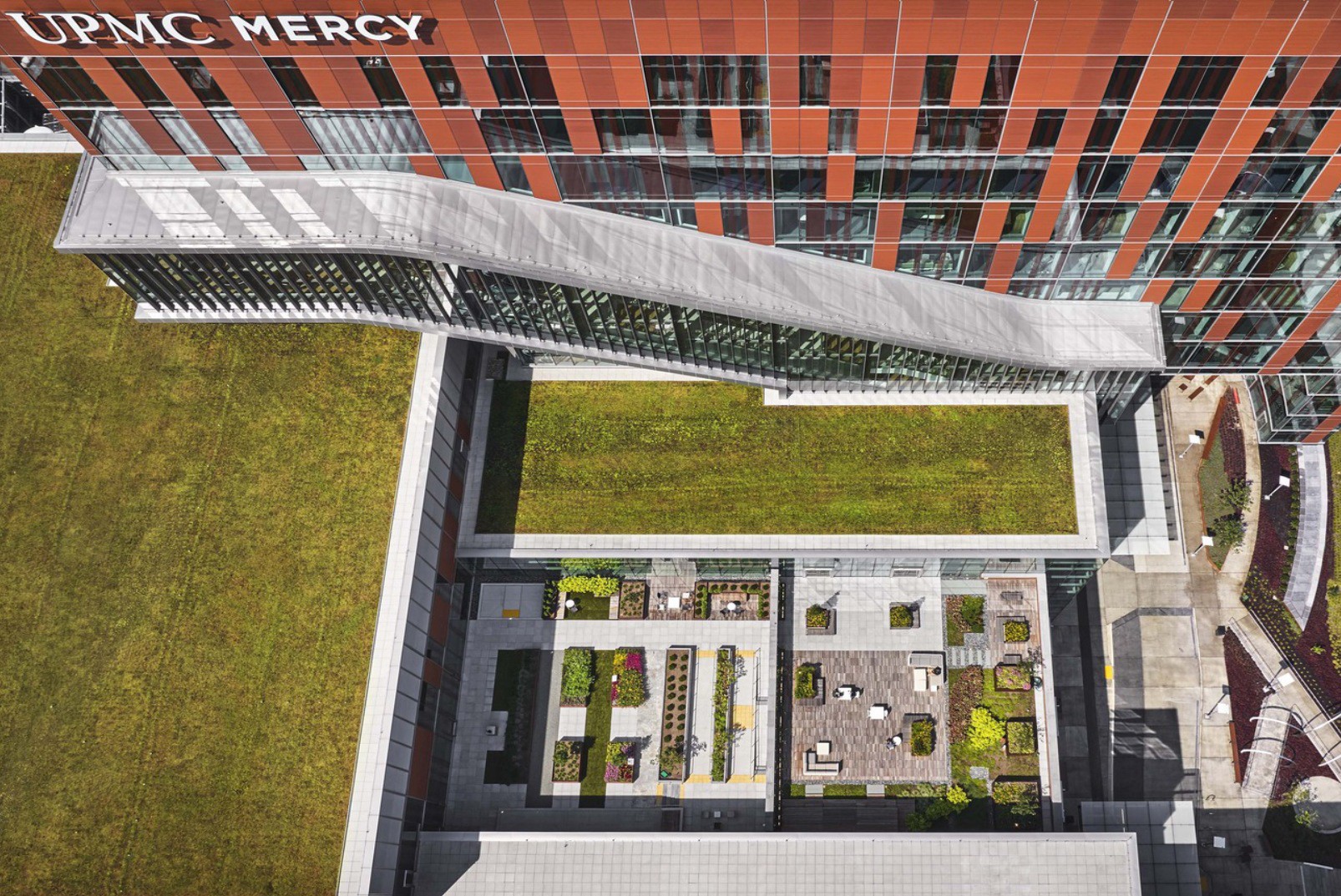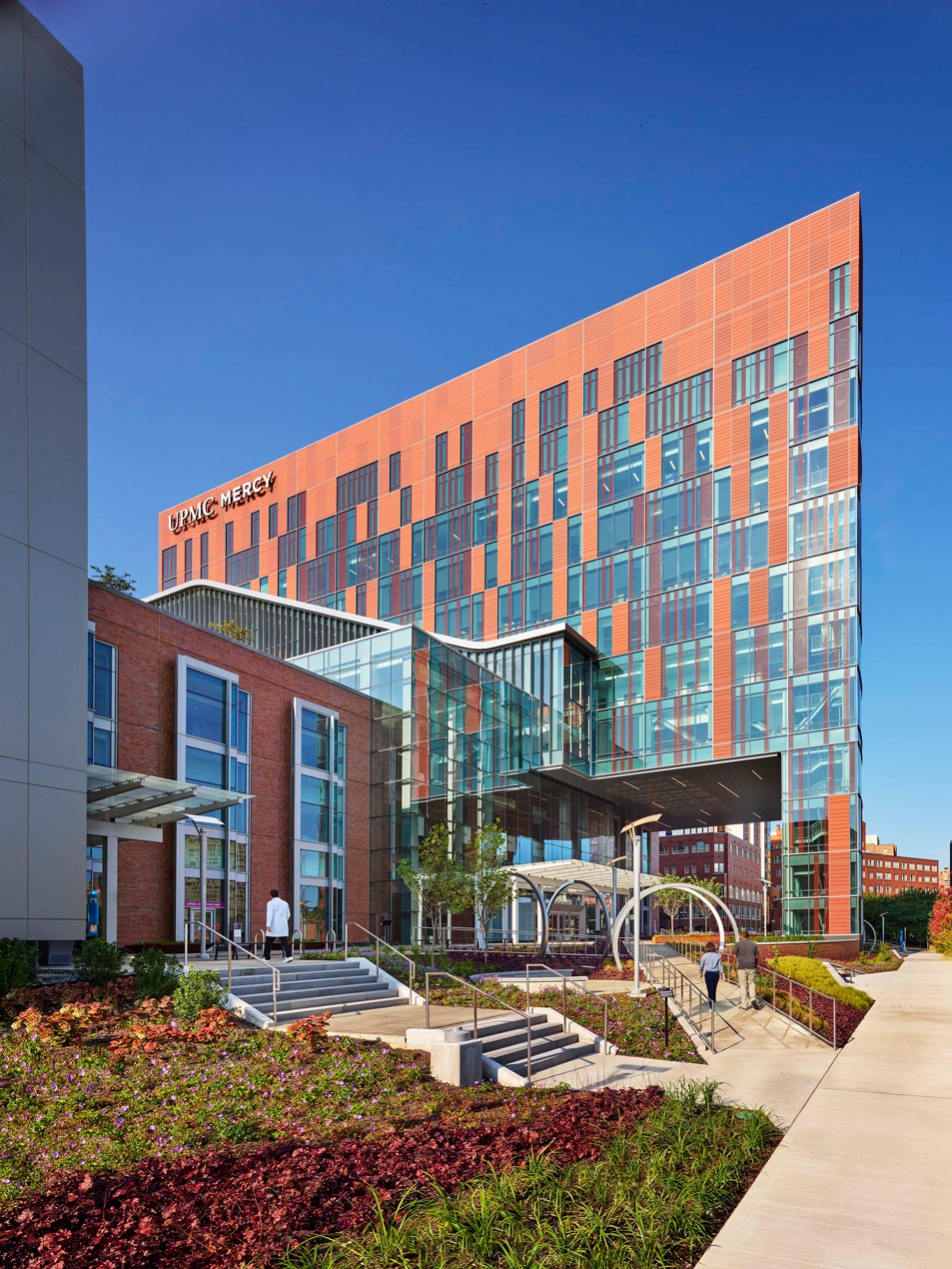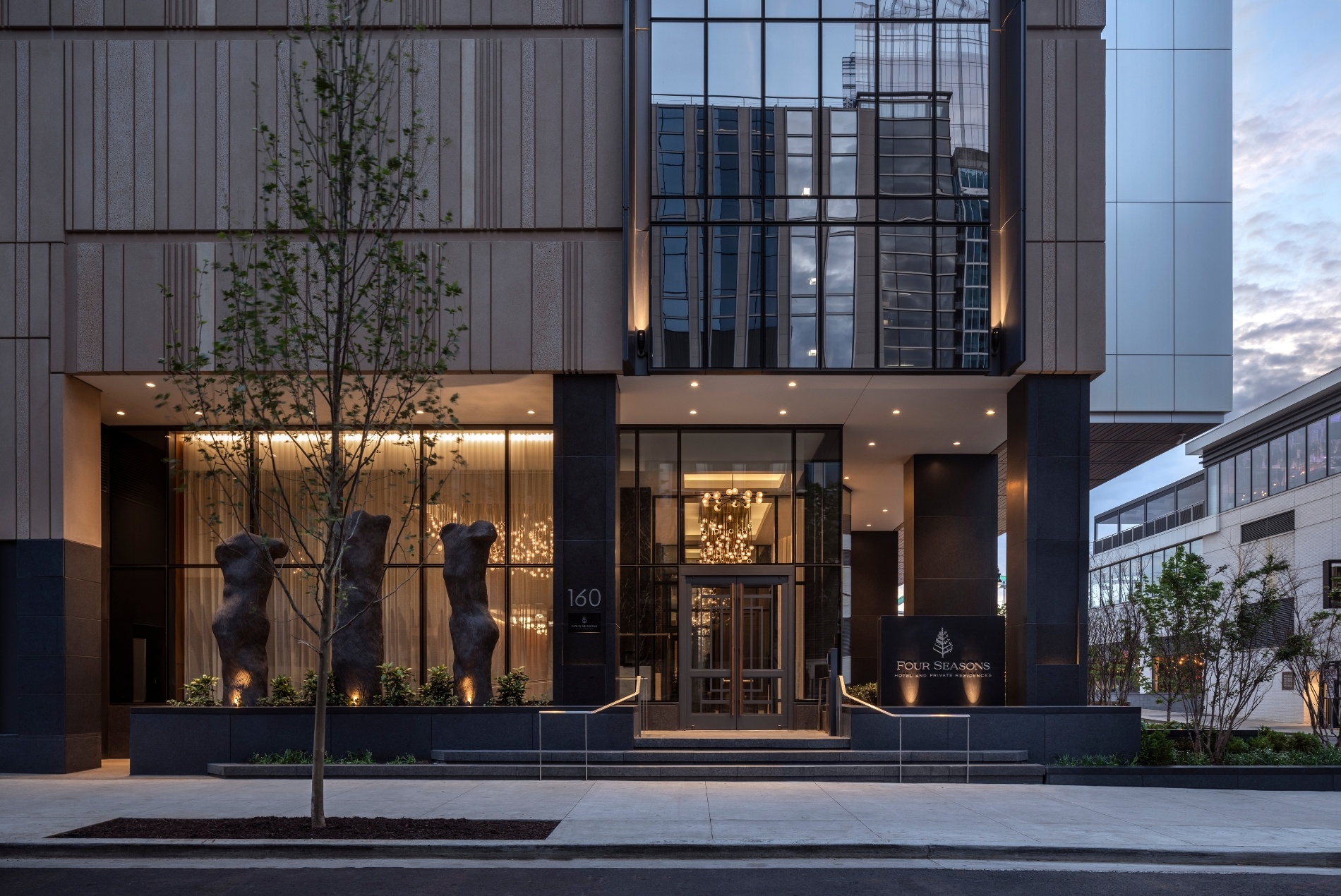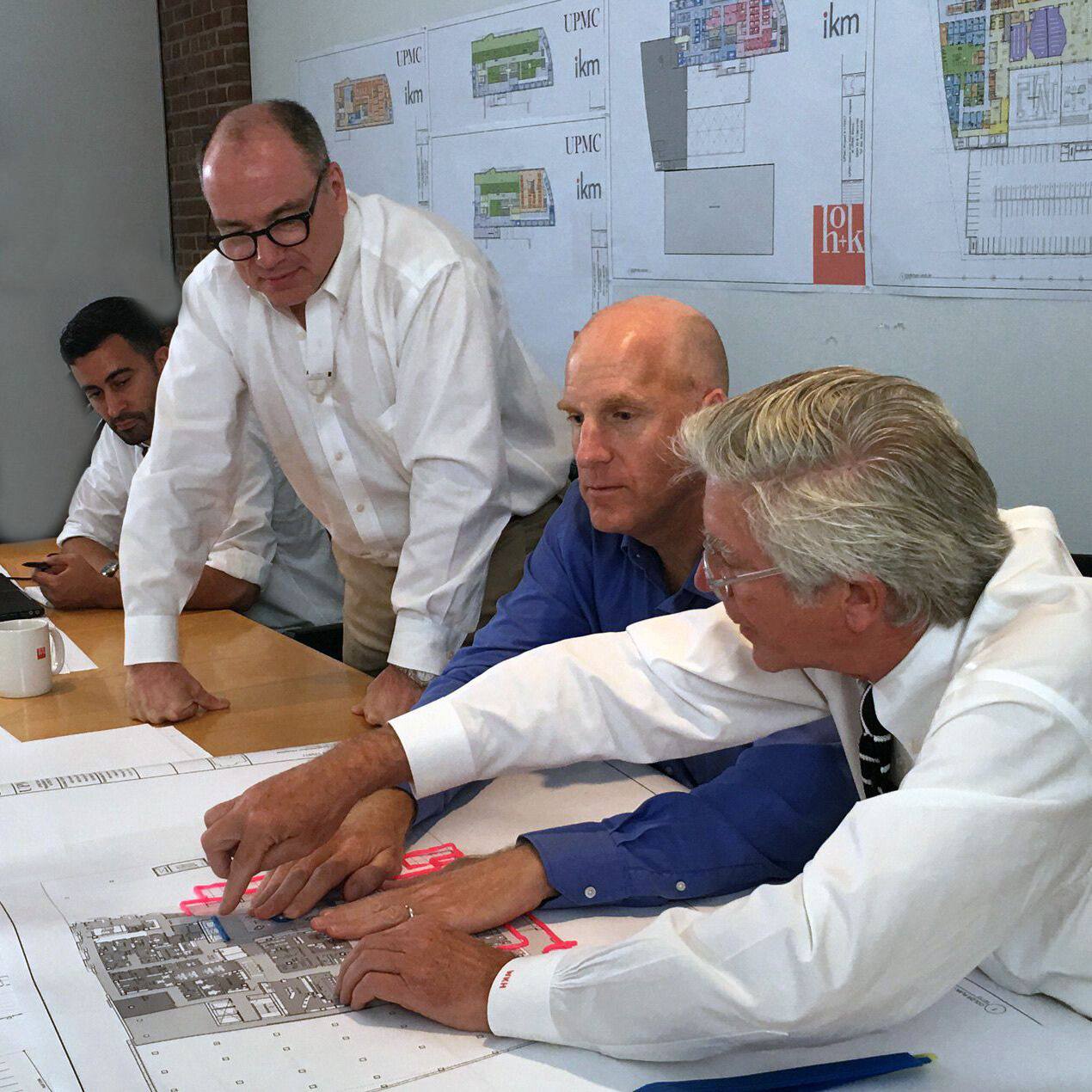
HOK collaborated on the building design with noted French scientist José-Alain Sahel, MD, chair of the Department of Ophthalmology, and renowned rehabilitation physician Gwendolyn Sowa, MD, PhD, director of UPMC’s Rehabilitation Institute.
HOK also collaborated with consultant Chris Downey, one of the world’s few blind architects.
The building’s universal design features innovative strategies for accessibility. These include lighting strategies that emphasizes contrast and brightness, sound as a wayfinding tool, and materials and textures that assist people using canes.
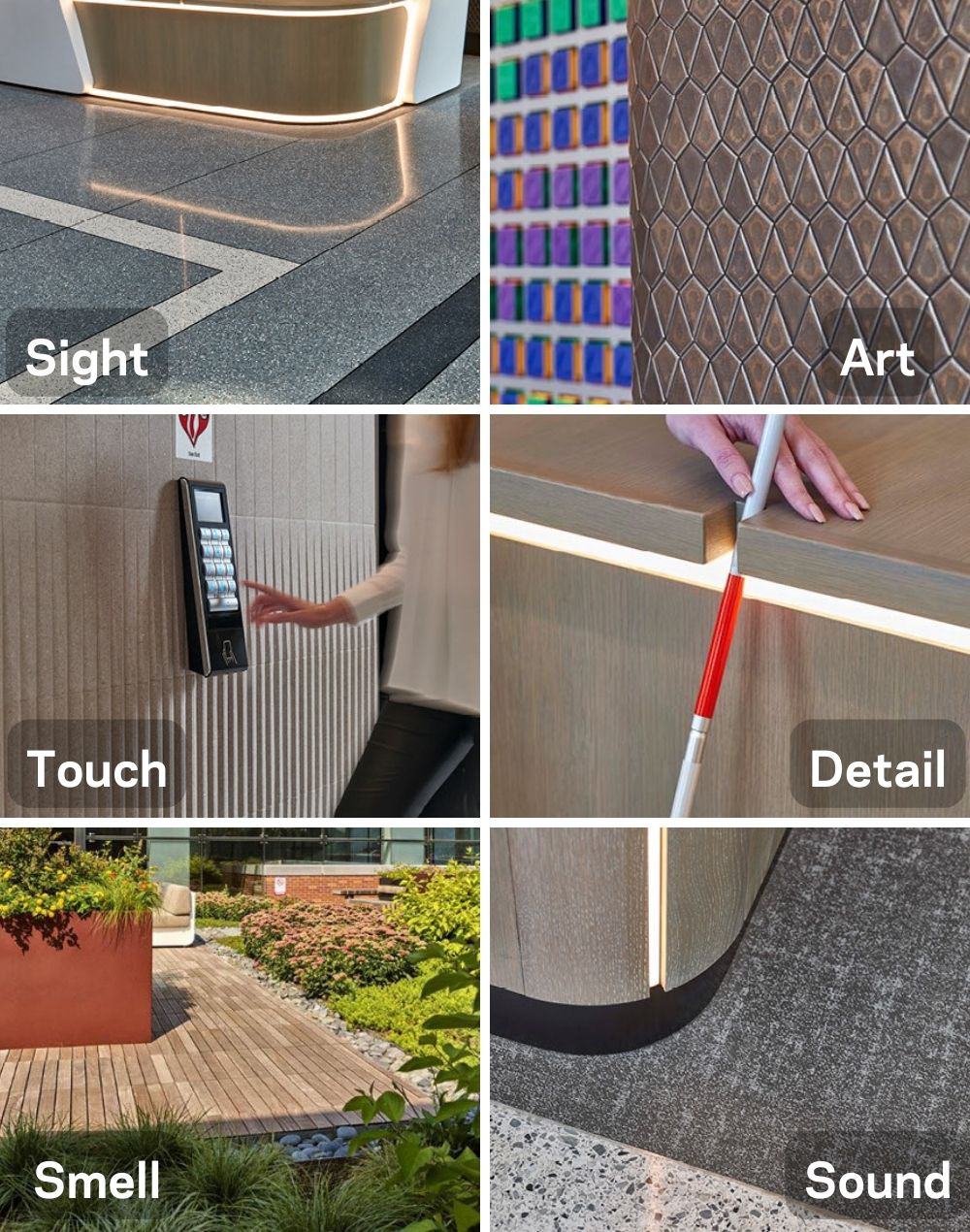
Sensory aids embedded in the design include:
Sight: Lighting and contrasting colors enhance visual navigation through the building.
Touch: Braille signage and textured wall surfaces provide tactile guidance.
Smell: Native plantings in healing gardens offer olfactory cues.
Art: Multi-sensory artwork encourages touch, sound and interaction.
Detail: Cane nooks and other details cater to individuals with limited sight.
Sound: Varying floor textures and acoustic treatments in ceilings and walls provide audial wayfinding cues.
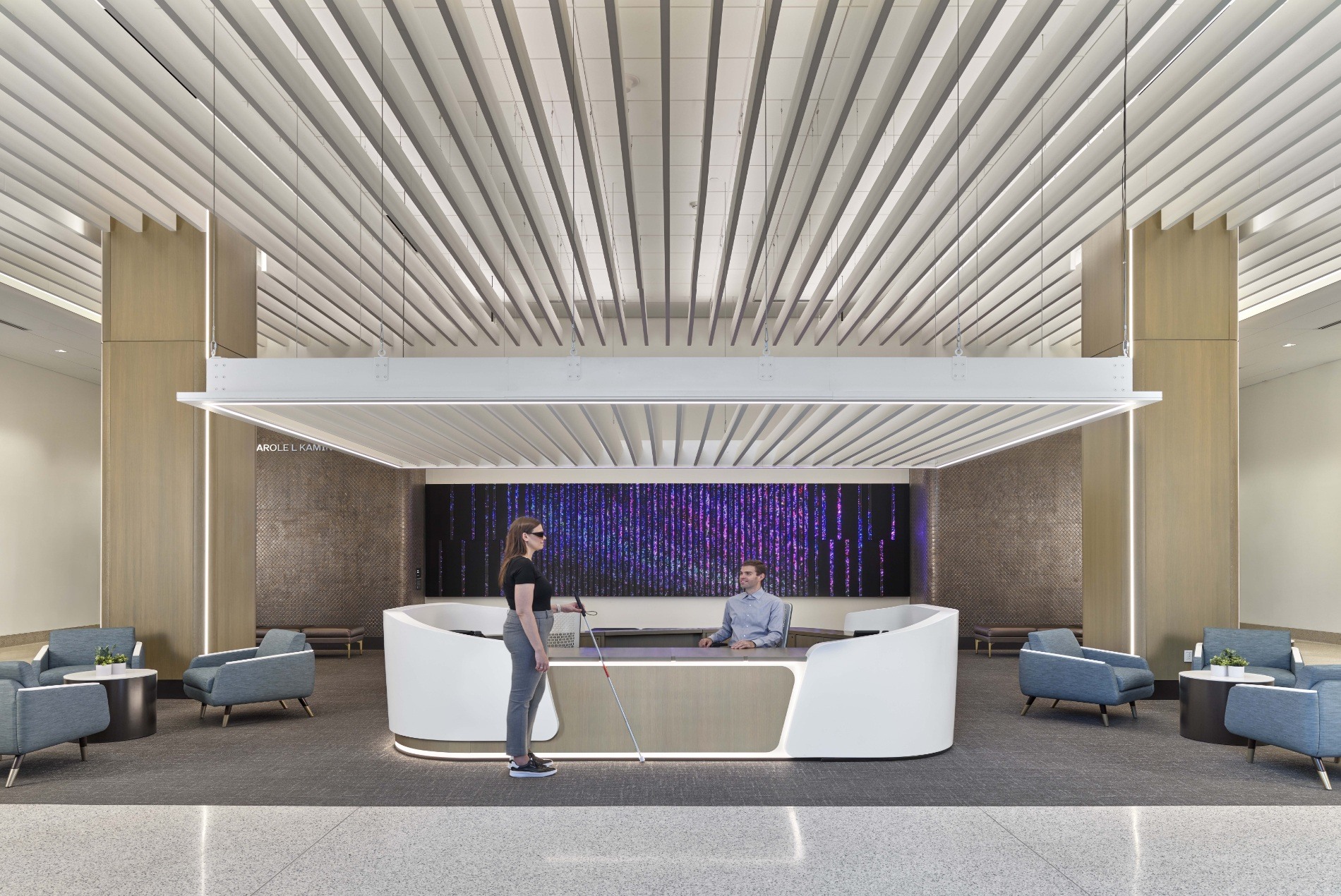

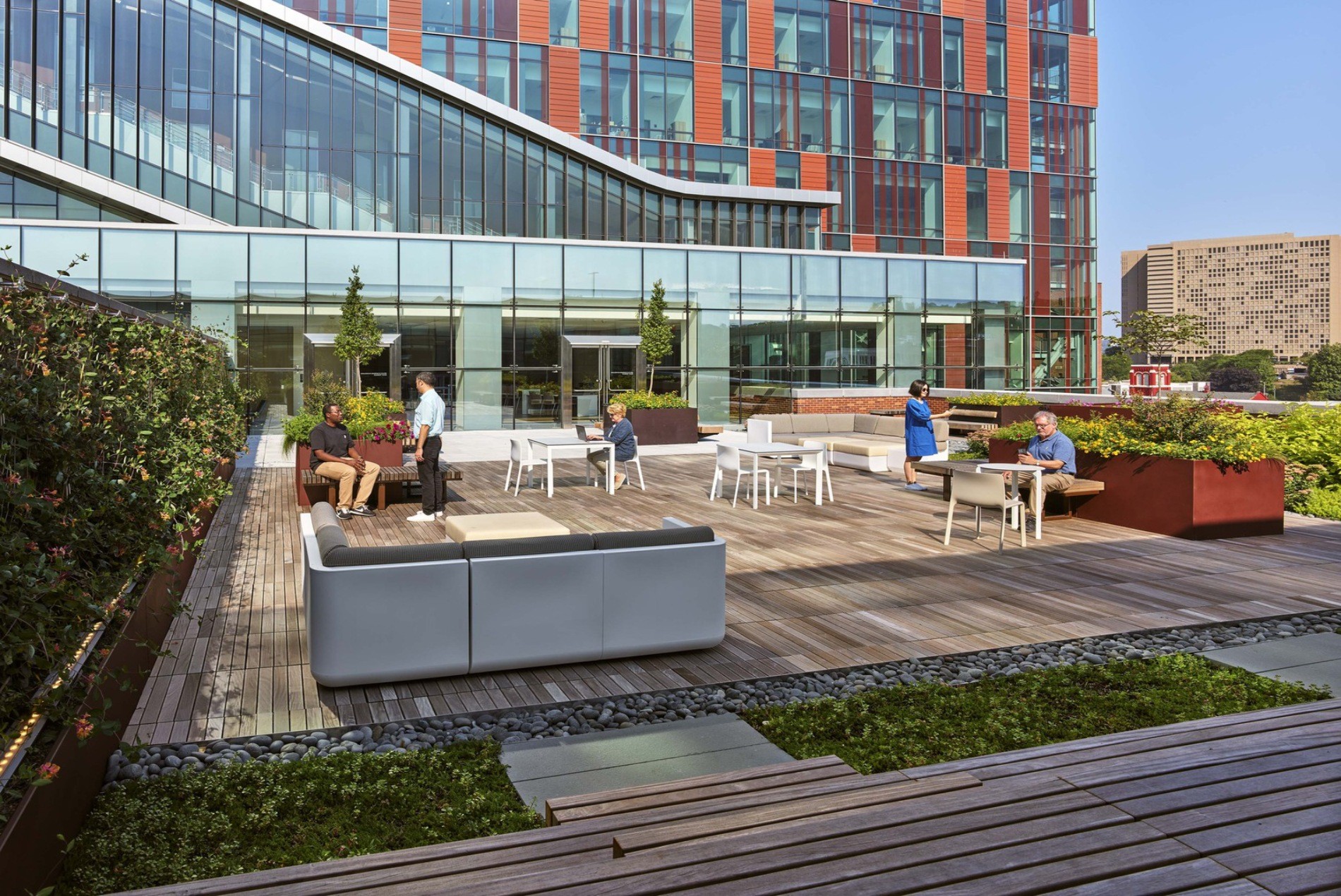
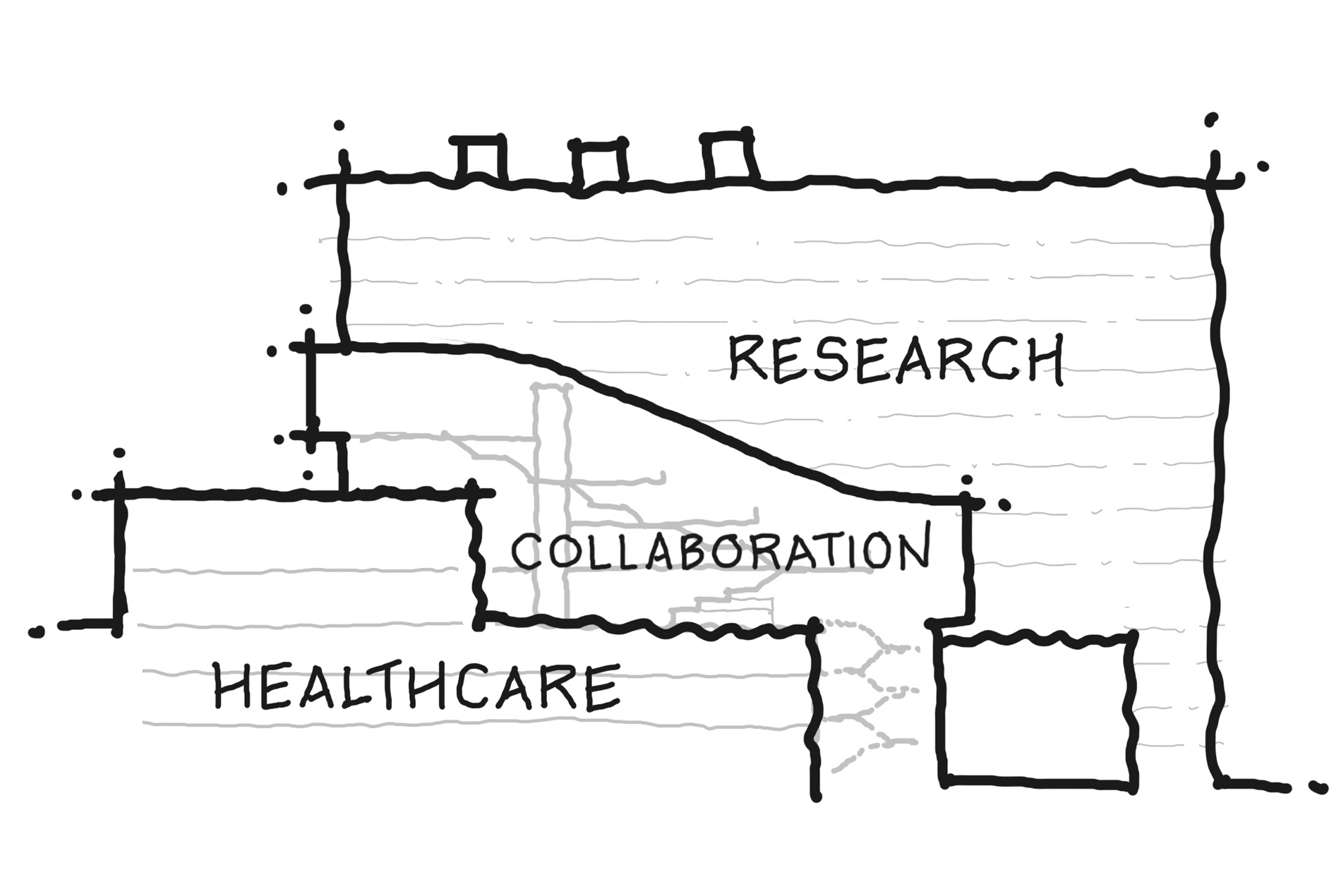
UPMC envisioned the building as a bridge between vision care with research. A glass-enclosed staircase on the eastern side advances this goal. The four-story stairway connects healthcare clinicians on the lower levels with researchers and scientists on upper floors.
The staircase, along with its gathering areas, foster collaboration and serendipitous encounters. It allows researchers and caregivers to interact while enjoying views of Pittsburgh and the Monongahela River.
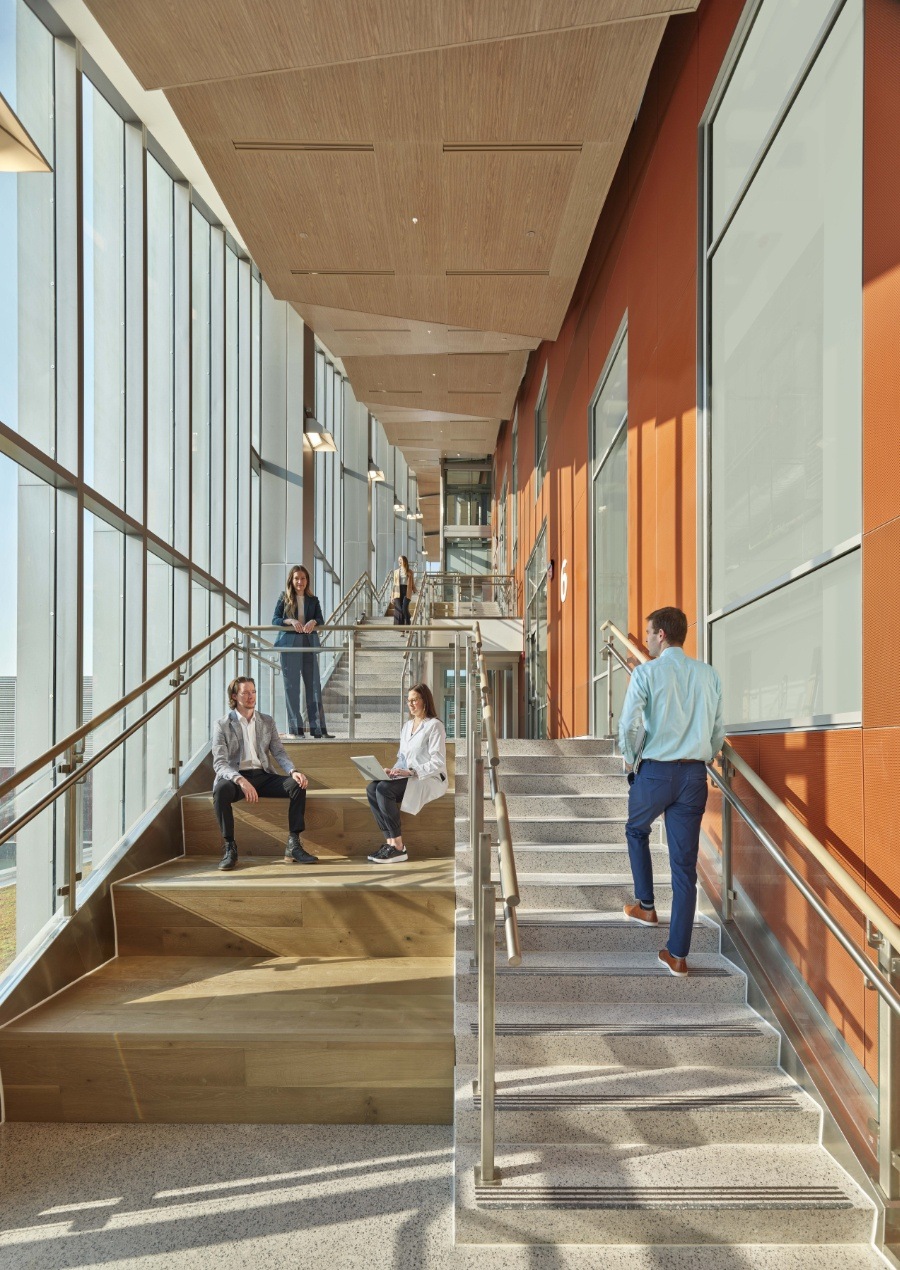
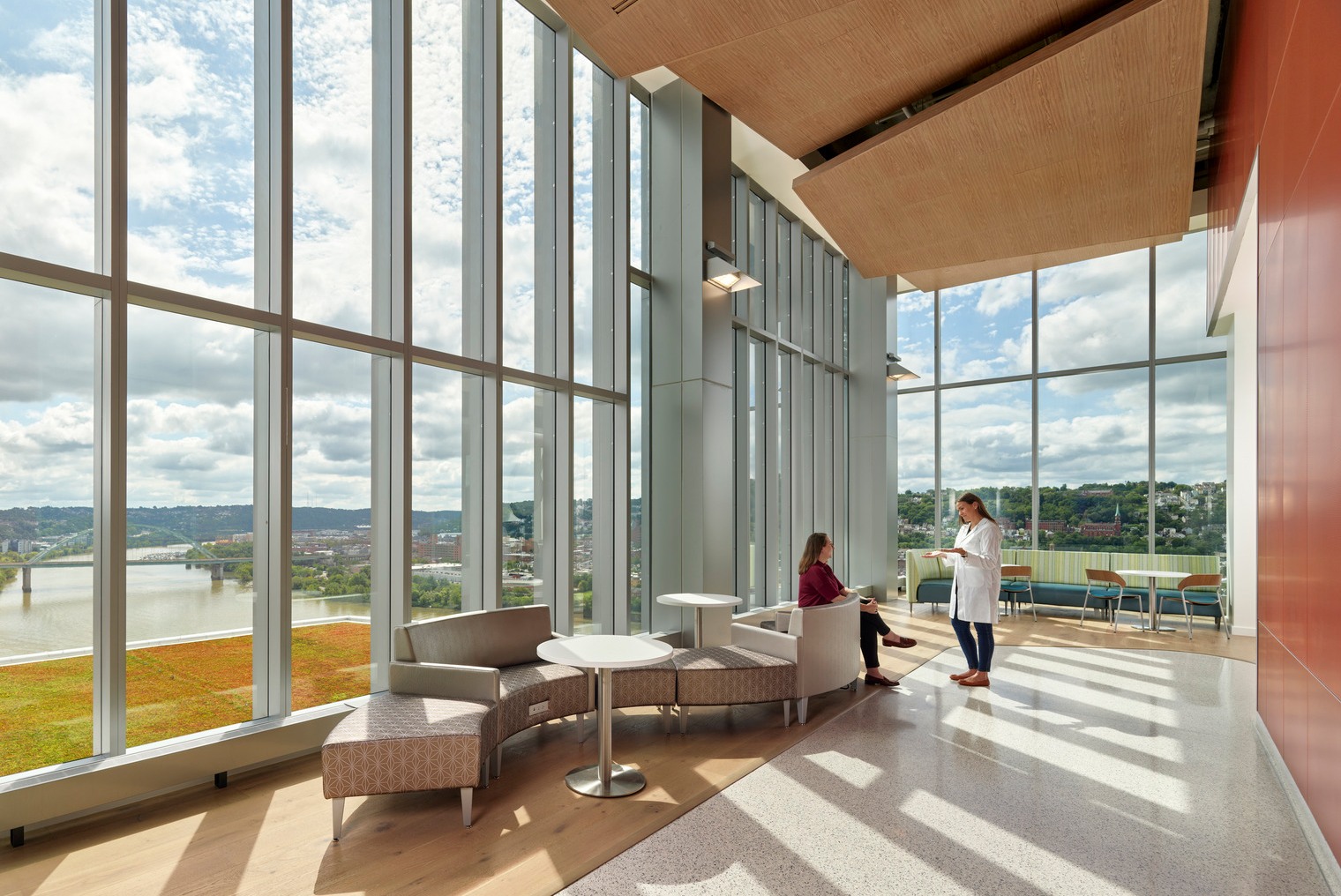
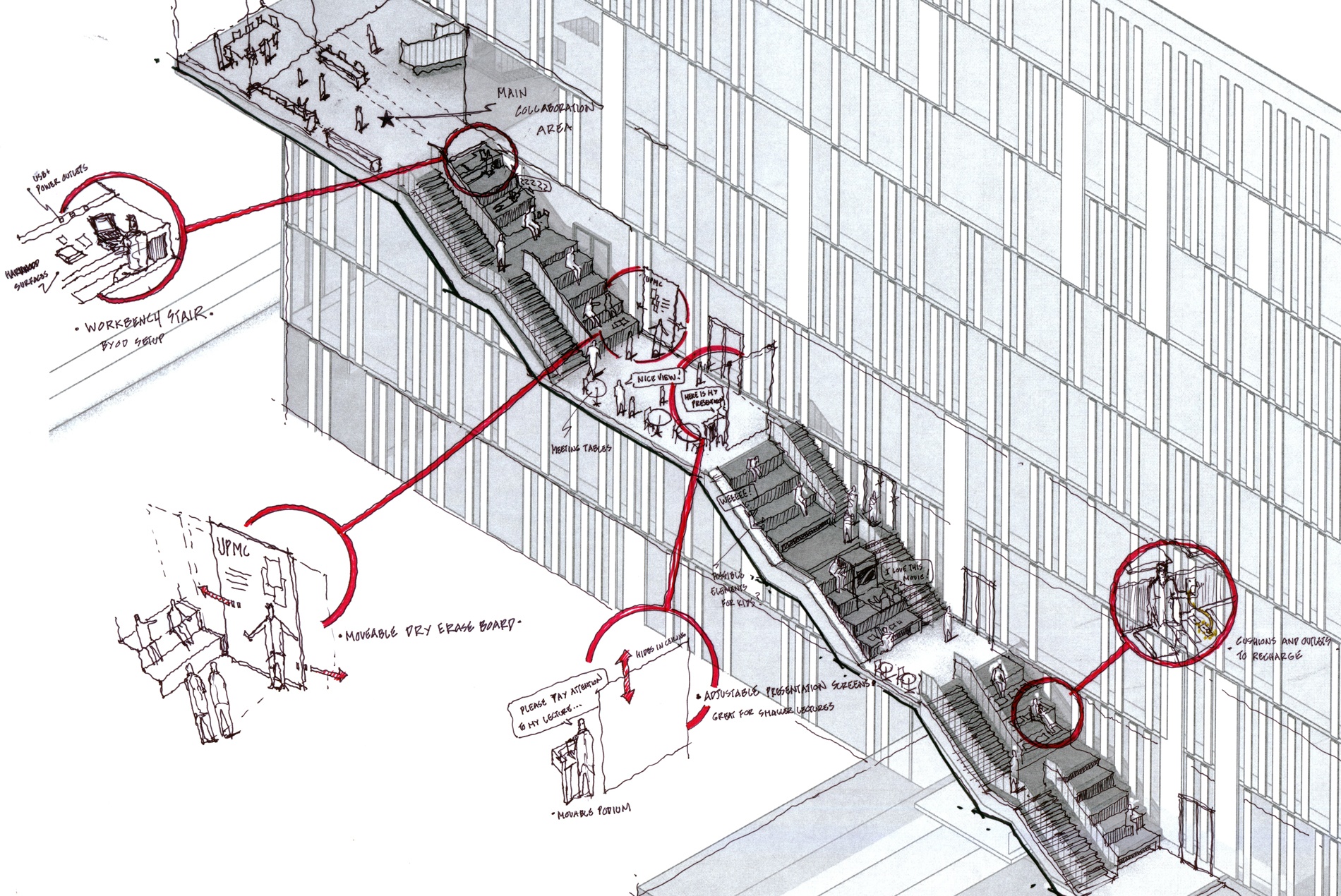
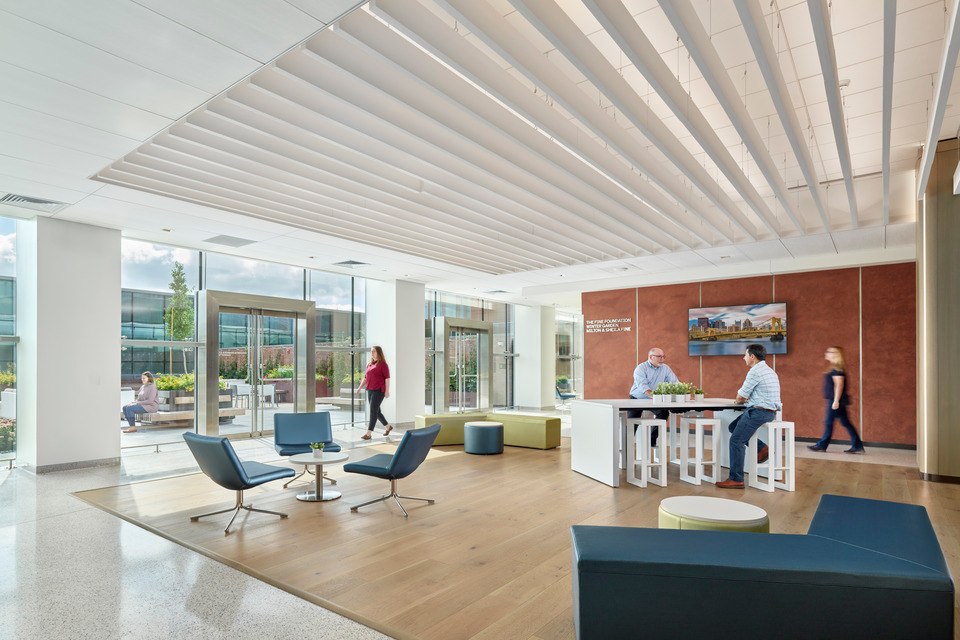
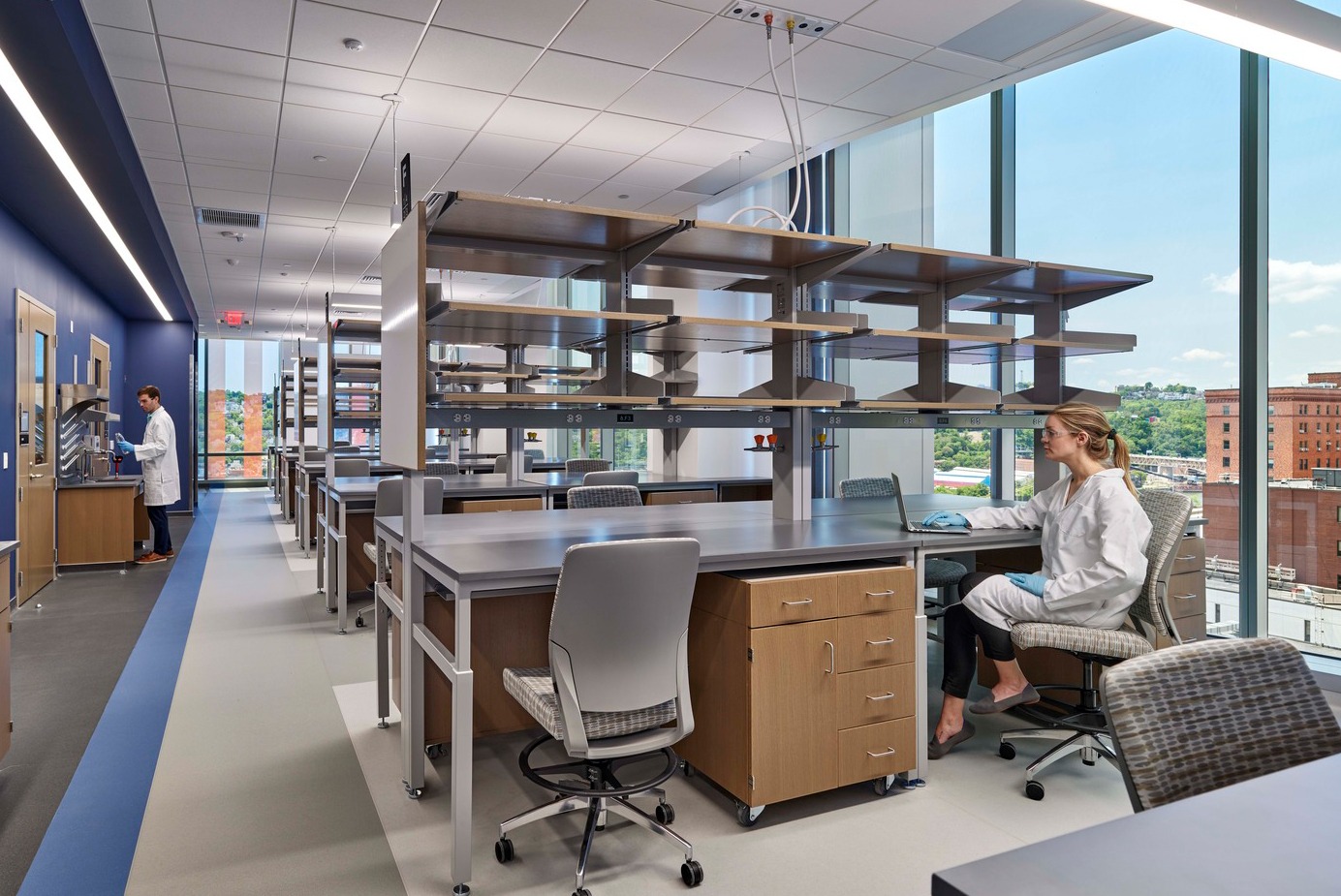
An Innovation Hub provides space for UPMC staff to collaborate with external partners to develop new treatments and devices for the visually impaired.
Floors 5-6 of UPMC Mercy Pavilion house ophthalmology administrative offices, clinical research suites and space for corporate partners. Floors 7-9 are dedicated to research, with flexible labs and shared core facilities offering direct connections to offices and meeting rooms.
To encourage interdisciplinary research, HOK designed a highly flexible clinical module. As its individual programs and needs change, UPMC can quickly and easily modify the modules.
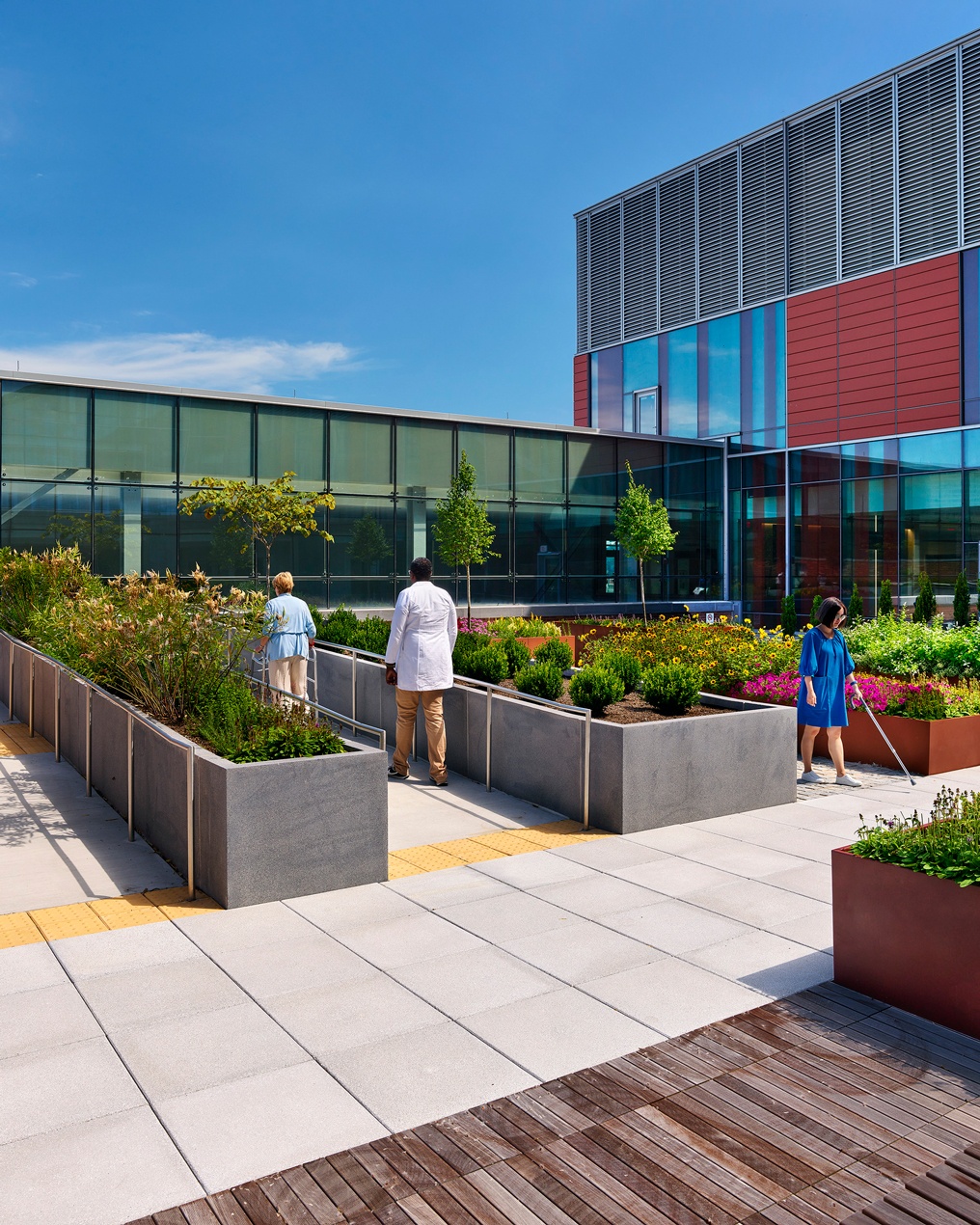
The UPMC Pavilion incorporates biophilic and wellness design to create spaces that nurture healing and support sustainability.
A rooftop healing garden (right) features training ramps and stairs to provide patients a safe environment to prepare for real-life experiences. A mock apartment and street lab encourage patients to participate in simulations that teach them life skills. A hybrid clinic and gym includes an interactive healing center, exam rooms, therapy stations and a central workout space.
The LEED v4-certified building features energy-efficient fritted glass and terra-cotta panels that mitigate solar heat gain. An expansive green roof helps limit runoff.

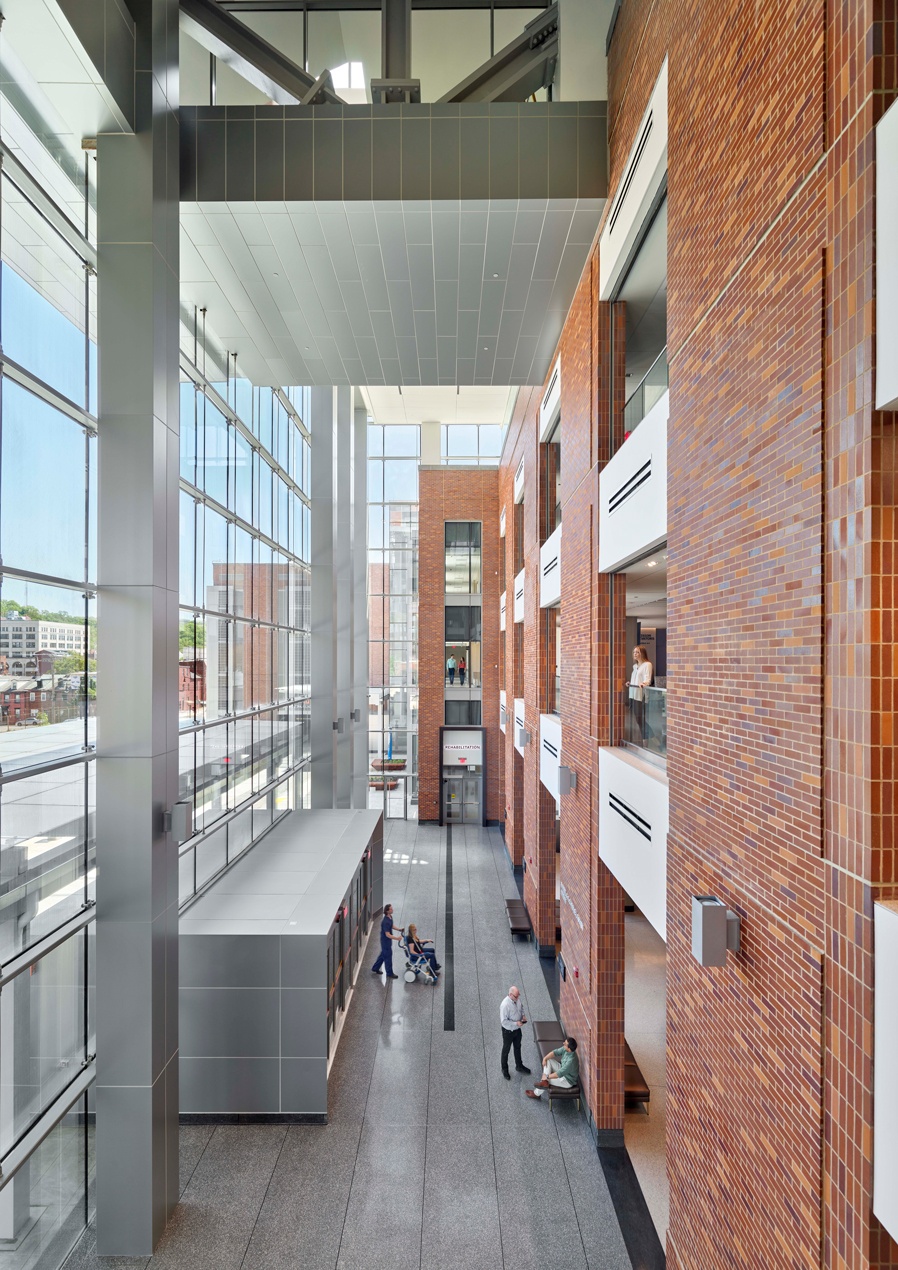
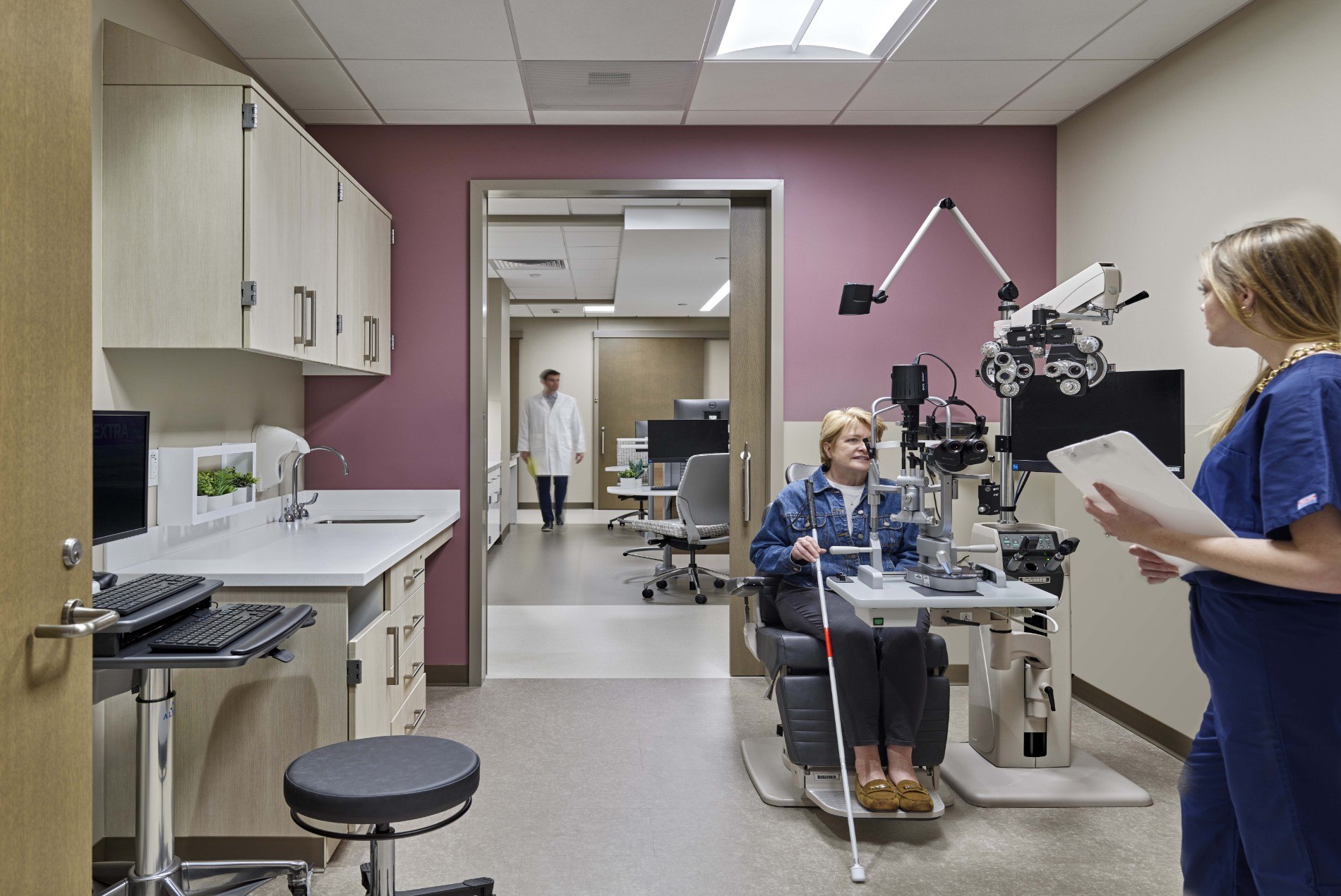
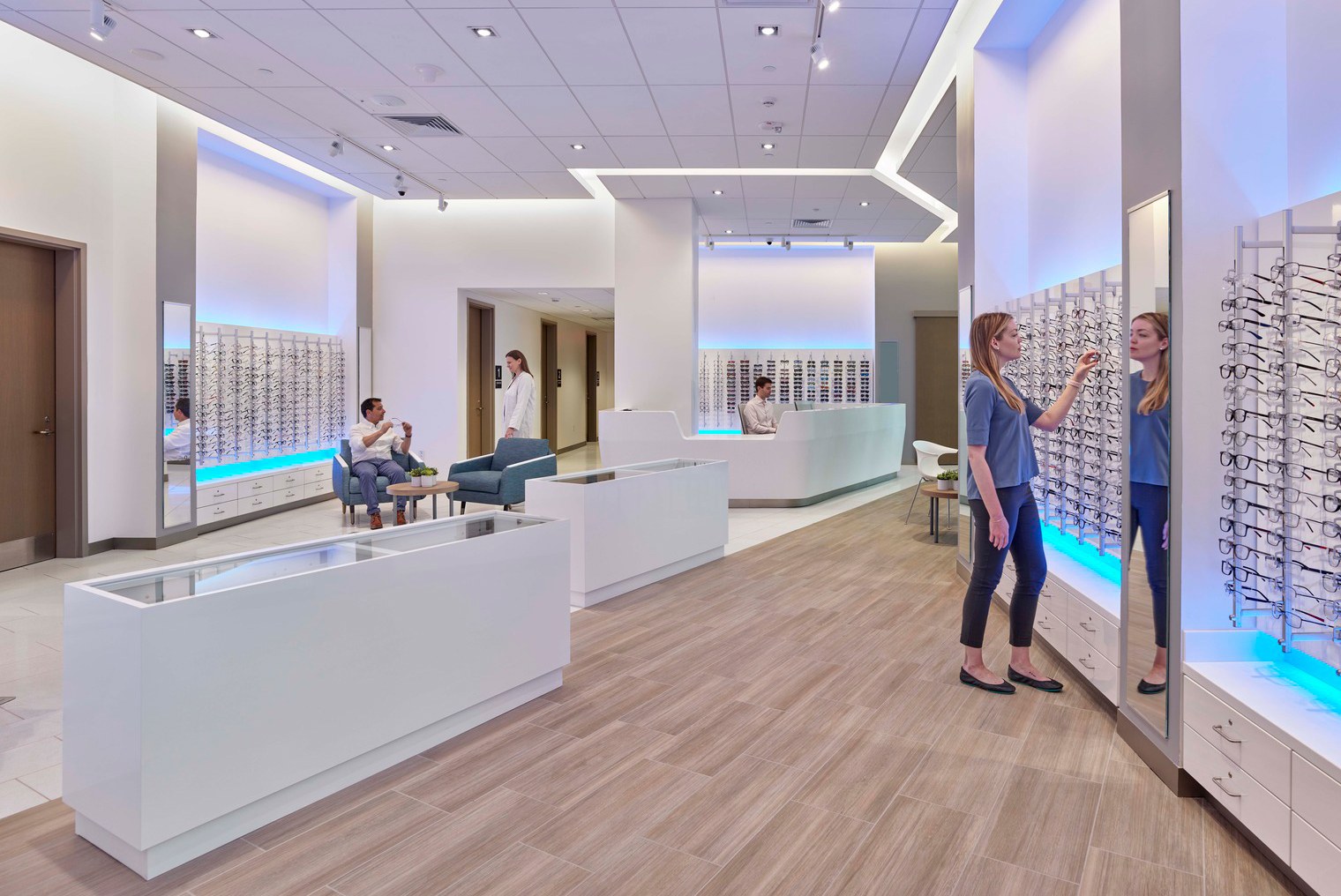
The design places primary treatment spaces on the first four floors to better accommodate patients and ease access.
Exam rooms feature two doors: a patient door opening onto the perimeter hallway and a staff door entering from a central bay area. This central bay arrangement improves staff efficiency and makes it easier for caregivers to collaborate during and between patient visits.
A full-service optical shop allows patients to get immediate eyecare solutions following their doctor’s visit. The shop is also open to the public for routine optical needs.
The project has received several design awards, including:
- 2024 ASLA Maryland Presidential Award
- 2024 International Interior Design Association – Premier Finalist
- 2023 Urban Land Institute Healthy Place Award.
